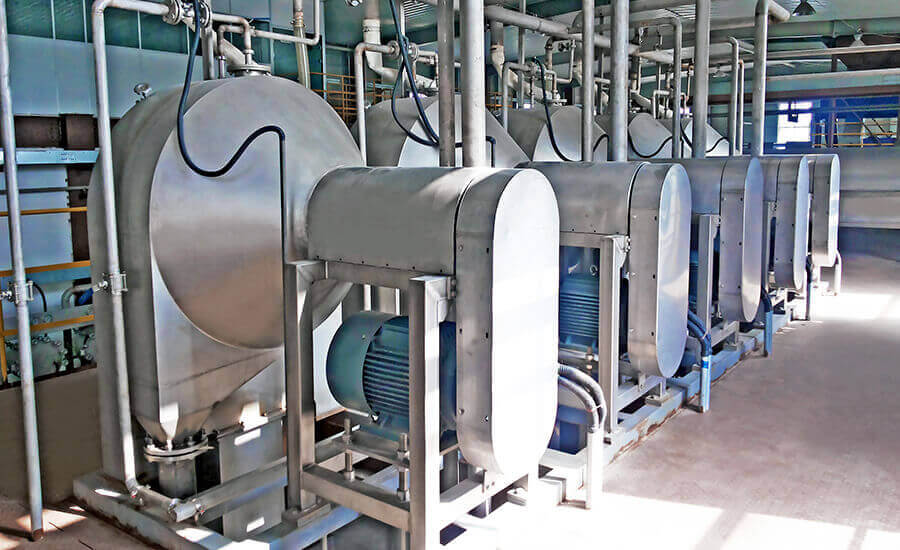
Potatoes are one of the main raw materials for making starch in my country, especially in Northeast China and North China, which mainly use potatoes as raw materials to produce starch. Europe also produces a large amount of potato starch, and America also produces it, but not in large quantities.

Potato cubes → washing → crushing → sifting → starch milk → starch meal → sedimentation → slurry → washing → bleaching → dehydration → wet starch → drying → crushing → sifting → packaging → finished product.
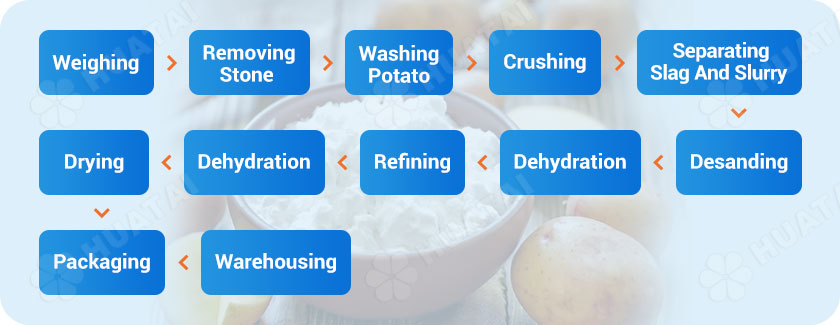
Raw materials for the production of potato starch should be selected with high unit yield, strong disease resistance, large potatoes, high starch content, uniform starch granule size (fast sedimentation), less soluble protein (less foam during grinding), thin skin, and few bumps ( Easy to wash), low in fiber, fresh unsprouted potatoes.
There are no special requirements for washing water, but starting from the crushing operation, all processing water should be soft water.
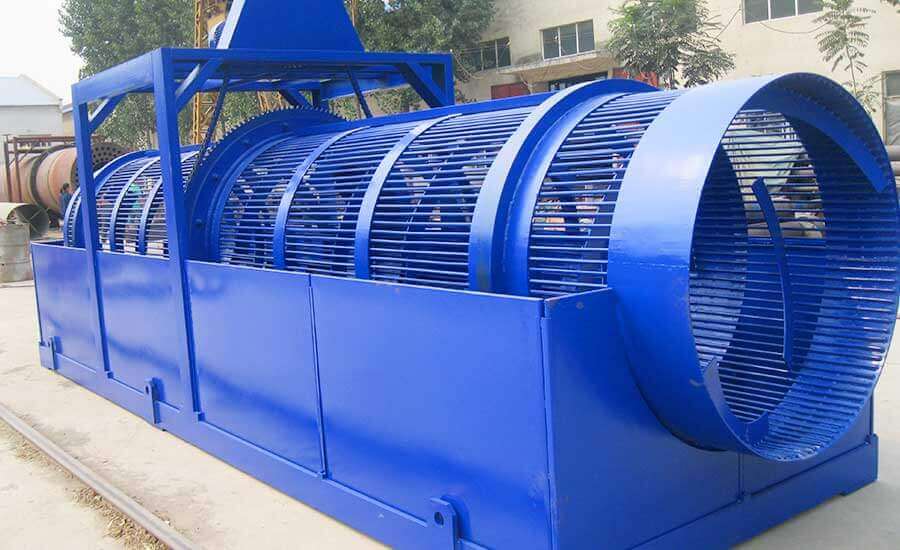
Potato cleaning machine
The particles of potato cubes are suspended in the cell juice of parenchyma cells, so it is easier to separate than grain starch. The greater the degree of fragmentation, the higher the flour extraction rate. Generally, the degree of fragmentation is required to be above 90%.
To destroy the cell tissue, grinding is generally required. Make it 2-3 times, and sieve it with a sieve each time to remove the fibers, unground tissue, and impurities in the ground material. The thing under the sieve is the powdered milk, and the thing above the sieve is put into the next grinder.
Water spraying is required during crushing and screening to facilitate grinding and washing out starch granules, which is conducive to pipeline transportation of materials.
The water consumption during crushing is about 2 times the weight of the raw materials, and the water used for screening is about 4 times the weight of the raw materials. The concentration of the final dilute starch milk is about 4-7 Baume degrees.
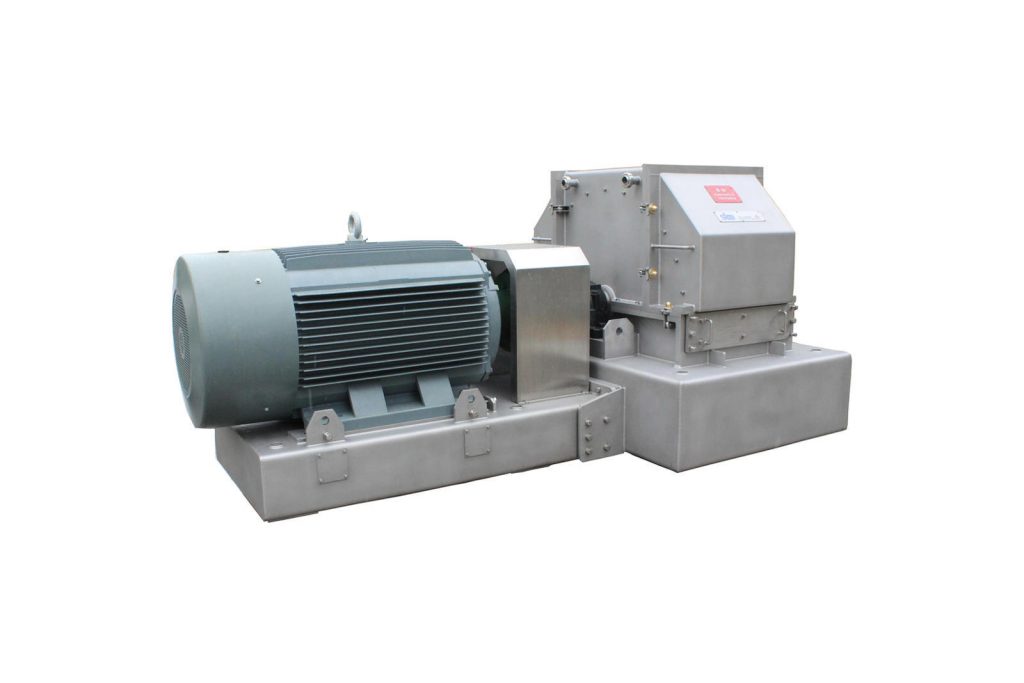
The starch milk obtained by sieving is an emulsion gum solution containing starch granules, crude fiber, and protein, and contains a variety of soluble sugars, organic acids, and other substances, as well as microorganisms and enzymes.
The factors that affect the precipitation of potato starch include the concentration of starch milk, the size and specific gravity of starch granules, and the pH value.
Starch granules precipitate faster when the starch granules are larger, have a larger specific gravity, smaller starch granule concentration, and a suitable pH value.
The precipitation time needs to be completed within 8 hours, otherwise it will cause the reproduction of microorganisms and affect the quality and yield of starch. Potato starch granules are larger, and when the starch milk is thin (4-7 degrees Baume), the expected results can be obtained by using a chute effect.
However, when the quality of the raw materials is poor, such as when the potato pieces are not fully grown and are partially rotten, and fermentation occurs after long-term storage or the temperature is too high during the processing season, the precipitation will be slow, resulting in a decrease in starch yield and quality. To accelerate precipitation, the starch milk must be adjusted.
The pH value of potato juice is about 4.2-4.4, and the isoelectric point of potato protein is about pH 5.4. If the pH of starch milk is lower than 5.4, a little alkali can be added to adjust it to dehydrate and solidify the protein particles as quickly as possible. , destroy the protein glue solution, and cause starch granules to precipitate.
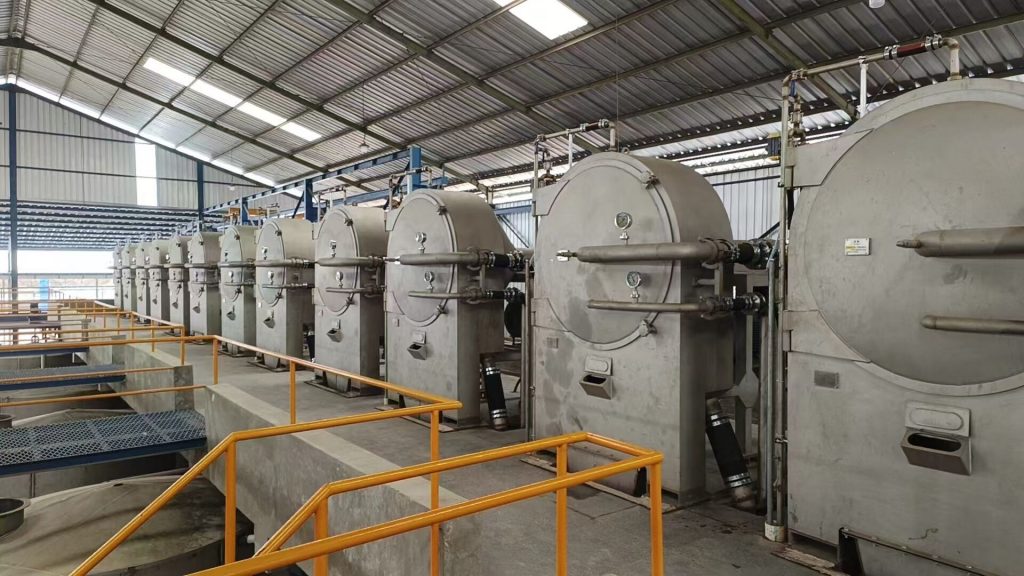
The starch obtained from the sedimentation tank of the chute is processed and diluted to 18 degrees Baume, transported to the washing tank with a pump, and washed with water 2-3 times, the waste liquid is drained, and water is added to dilute to 18 degrees Baume, and the warp is delivered. Glue section.
For starch with poor raw materials and darker pink color, decolorization and bleaching should be carried out after the last washing. Use bleaching powder or SO2 as bleach.
The amount of bleaching powder used depends on the concentration of the starch milk. Generally, 100 liters of 18-degree Baume starch milk requires about 40-50g of bleaching powder.
Before bleaching, prepare a bleaching powder solution. Before use, add bleaching powder to warm water at about 30°C to prepare a 4-4.5°C Baume solution. After stirring, cover and let stand for 15 hours, then take the supernatant for use.
When bleaching, add the bleaching powder solution to the starch milk and stir continuously for 40-60 minutes. After bleaching, let it stand for about 2 hours to allow the starch to precipitate. Then drain the supernatant and repeatedly wash away the residual chlorine with water, or add a small amount of sulfur after letting it stand for precipitation. Use sodium sulfate solution to remove residual chlorine.
To test whether there is residual chlorine in the starch, a small amount of starch emulsion can be dropped into a KI solution with a concentration of 5%. It will not change color and no chlorine is present. If it turns yellow-brown, chlorine is present, KI+Cl2→KCl+I2. If residual chlorine is present, then It is necessary to add sodium thiosulfate solution to remove residual chlorine.
Sulfurous acid is a reducing agent that can inhibit oxidative discoloration and decolorize pigments. It can also change the pH value of starch milk, promote protein precipitation, and inhibit fermentation. When using it, first dilute H2SO3 to a solution containing about 2.5% SO2. Each ton of raw pulp The starch milk requires about 0.6-0.8 liters of H2SO3 solution of this concentration.
After the starch milk is wrapped in cloth and dehydrated mechanically, it becomes wet starch. The appearance of wet starch is turbulent and white, agglomerated, not sour, and the cut surface is smooth.
When drying, first break the starch clumps. Natural drying takes about 3-6 days. Artificial drying. The product temperature is controlled at 40-58°C until the moisture content of the dried starch drops to 20%.
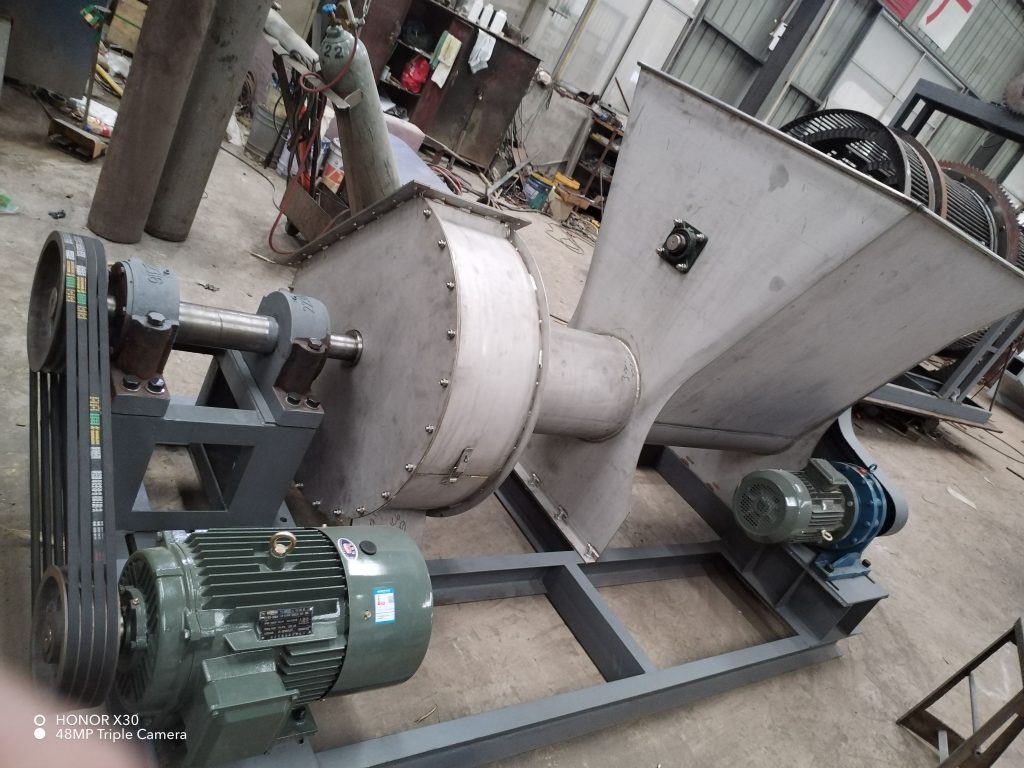
After drying, take it out and let it cool, then crush it with a pulverizer, and finally sift it through a silk sieve with a milk diameter of 0.11mm to remove small powder pieces, and then package it in cloth bags, each bag is 25 kilograms, which is the finished product.
Well, maybe you have the following questions, how much does a starch plant cost? How to build a turnkey starch production plant? We will answer your doubts in two parts.
First, building a starch production plant requires considerable resource investment and many aspects need to be considered. The main process is as follows: preliminary communication, making requirements, our factory technicians propose design plans, come to our factory for inspection, sign contracts, equipment production, delivery, overseas installation, equipment operator training, trial operation and formal production.
In this process, you need to consider the following practical issues.

1) Are you building a factory for the first time, or are you expanding? For example, if you previously owned a starch processing plant, you want to expand the production scale and build another production line for market reasons.
2) Do you have a stable supply of related materials? For example, you have land for growing cassava, sweet potatoes, or potatoes, or other grains, or you have signed a cooperative procurement agreement with local farmers. You can provide us with the raw material capacity you need to process and how many tons you need to process per day, and we will design a complete production line for you based on your production capacity.
3) Do you have the qualifications to build a factory, do you have land that meets the requirements for starch processing plant construction and sufficient funds to build a factory?
Through comprehensive consideration of these three aspects, you can consider whether you meet the conditions for establishing a starch production plant.
Second, if you think you really need to purchase equipment or build a factory, please provide the following information. Based on these situations, we will provide you with the most suitable solution for you, including starch flow chart and equipment configuration list. If it is a general contracting project, we will provide you with detailed quotations for civil engineering, steel structure, personnel training, etc. after later communication. Therefore, please provide the following information in the form below so that we can provide you with a detailed quotation, such as:
1) Your starch processing technology requirements: starch production, grinding or deep processing, or other processes;
2) Starch plant materials and capacity: For example, how many tons of cassava do you want to process per day?
3) In which country is your project located? Can you leave your company name?
4) Other special funding and land requirements, such as adjusting the process flow according to funding conditions, adjusting the process flow according to topography and environment, etc.?
The more detailed the information, the more efficient we can serve you.
In addition, please note that you should not leave only meaningless numbers or words, or topics that are irrelevant to our business. Our sales manager will classify such inquiries as spam and will not respond. Thank you.